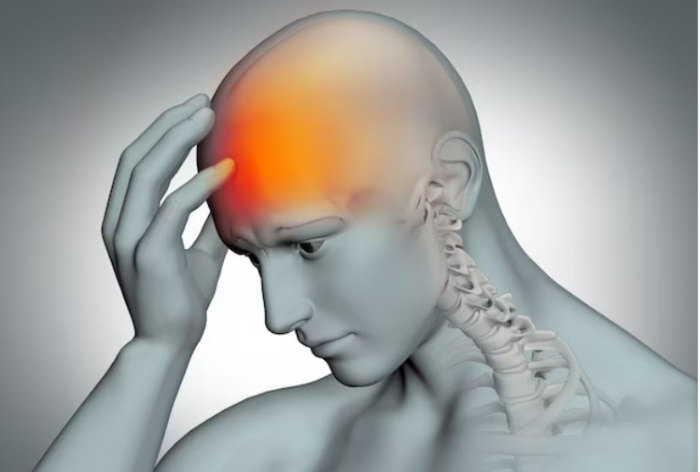Brain Attack: Understanding the Types of Stroke, Recognizing the Signs and Symptoms, and Exploring Treatment Options
When it comes to brain health, time is of the essence. Brain cells are unable to recover once they die, and any severe damage can lead to a range of mental, cognitive, and physical problems. Therefore, it is crucial to restore the brain’s normal blood flow and oxygen supply as quickly as possible. In this report, we will delve into the different types of stroke, their signs and symptoms, and the available treatment options.
What is a Stroke?
A stroke, also known as a brain attack, occurs when a blood artery in the brain breaks or when something obstructs the flow of blood to a specific area of the brain. In either case, certain regions of the brain suffer harm, and in some cases, they can even die. Strokes can have devastating consequences, including permanent impairment, death, or irreversible brain damage.
According to Dr. Kailas Mirche, a Neurologist at Citizens Specialty Hospital in Hyderabad, India, a brain stroke, medically known as a cerebrovascular accident (CVA), is a medical emergency that arises due to a disruption in the blood supply to the brain. However, early recognition of symptoms and prompt medical attention can make a significant difference in recovery outcomes.
Different Types of Stroke
1. Ischemic Stroke:
Ischemic strokes are the most common type, accounting for approximately 87% of all cases. They occur when a blood clot or plaque blocks a blood vessel in the brain, cutting off the blood supply to a specific area. This lack of oxygen and nutrients can lead to cell damage and death. Symptoms of an ischemic stroke may include sudden numbness or weakness in the face, arm, or leg (typically on one side of the body), confusion, trouble speaking or understanding speech, vision problems in one or both eyes, difficulty walking, loss of balance or coordination, and severe headache with no known cause.
The primary causes of ischemic strokes include high blood pressure, atherosclerosis (hardening and narrowing of the arteries), and heart conditions like atrial fibrillation. Treatment for ischemic strokes often involves the administration of clot-busting medications, such as tissue plasminogen activator (tPA), and in some cases, endovascular procedures to remove the clot.
2. Hemorrhagic Stroke:
Hemorrhagic strokes occur when a blood vessel in the brain ruptures, causing bleeding into the surrounding tissue. Although less common, they are often more severe than ischemic strokes. Symptoms of a hemorrhagic stroke may include a sudden and severe headache, nausea and vomiting, vision changes, weakness or numbness, and difficulty speaking.
High blood pressure, aneurysms (weakened blood vessel walls), and arteriovenous malformations (abnormal connections between arteries and veins) are the most common causes of hemorrhagic strokes. Treatment for such strokes may involve surgery to repair the ruptured blood vessel, medications to control blood pressure, and other supportive care measures.
3. Transient Ischemic Attack (TIA):
A transient ischemic attack, commonly referred to as a “mini-stroke,” is a temporary disruption in blood supply to the brain. While TIAs do not cause permanent brain damage, they act as warning signs of an impending stroke. The symptoms of a TIA are similar to those of an ischemic stroke and may include sudden numbness or weakness, difficulty speaking or understanding speech, vision problems, and loss of balance or coordination.
TIAs typically last only a few minutes to a few hours and resolve on their own. They are caused by a temporary blood clot and may serve as a precursor to a more severe ischemic stroke. To prevent a future stroke, individuals who have experienced a TIA should receive prompt medical attention. Treatment often involves lifestyle changes, medication, and addressing underlying risk factors.
Preventive Measures and Treatment for Stroke
Stroke treatment depends on the type, severity, and overall health of the individual. In general, treatment focuses on the following key aspects:
1. Emergency Medical Care: The immediate priority is to restore blood flow to the brain. Clot-busting medications, such as tPA, are administered for ischemic strokes, while measures are taken to control bleeding in hemorrhagic strokes.
2. Rehabilitation: Stroke survivors often require rehabilitation to regain lost skills and independence. This may involve physical therapy, occupational therapy, speech therapy, and psychological support.
3. Medications: Medications may be prescribed to manage risk factors, such as high blood pressure, high cholesterol, and blood-thinning drugs, to prevent future strokes.
4. Surgery: In some cases, surgical interventions may be necessary to repair blood vessels, remove blood clots, or treat underlying conditions.
5. Lifestyle Changes: Adopting a healthier lifestyle is crucial in stroke prevention. This includes maintaining a balanced diet, engaging in regular exercise, and quitting smoking.
Moreover, taking preventive measures and managing risk factors play a crucial role in reducing the likelihood of stroke occurrence.
In conclusion, understanding the different types of stroke, recognizing the signs and symptoms, and knowing the available treatment options are essential for individuals and their loved ones. Remember, strokes are medical emergencies, and immediate medical attention can significantly impact the recovery outcomes. By staying informed, adopting a healthy lifestyle, and managing risk factors, we can work towards reducing the impact of strokes on individuals and society as a whole.
Sources:
1. Citizens Specialty Hospital, Hyderabad
2. Mayo Clinic
3. American Stroke Association


